The Modern Cubicle and Hot Desking
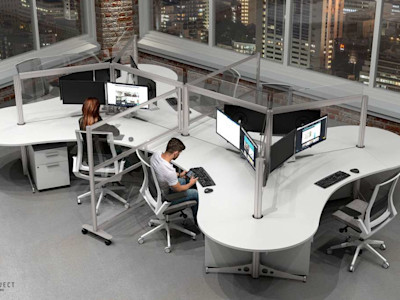
Did you know that the cubicle, initially introduced to offices in 1967 as Action Office II, aimed to enhance employee privacy and minimize distractions? However, nowadays, these partially enclosed workspaces are often viewed as uninspiring and isolating chambers for companies stuck in the past. But is the modern cubicle and hot desking changing the future of work?
A new factor influencing office design is the rise of the hybrid workforce. A well-designed hybrid workplace can dismantle barriers among employees, fostering deeper connections and collaboration. Responding to this trend, "Hot Desking" is making a comeback – an open approach where employees are encouraged to share communal spaces, moving between larger tables, collaboration areas, and other open workspaces. Nevertheless, it's essential not to overlook the potential of modern office cubicles.
How Does Hot Desking Work?
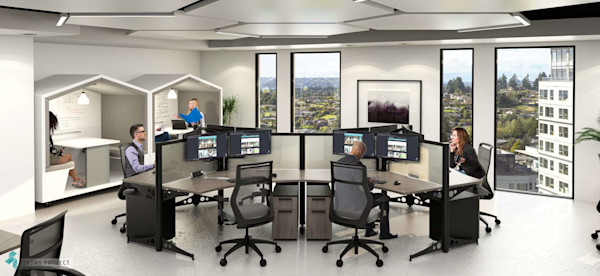
Learn more about incorporating the hot desking model into your office
Instead of isolating employees on individual islands, hot desking provides increased access to coworkers and collaboration. Historically, work followed an assembly line model, with projects passed along the line until completion. However, as employees operate in isolated "silos," projects either deviate significantly from the original vision or the initial concept is forgotten. Geographically separated teams further amplify this disconnect.
Hot Desking and Hybrid Teams
In a hybrid team setting, hot desking empowers every team member to engage with a project at every stage. It fosters a more relaxed atmosphere, encouraging questions and collaborative efforts on all aspects of a project. This approach eliminates the need for disruptive meetings to discuss projects, ensuring that the original vision remains intact from inception to completion. By introducing seating flexibility, employees can be where they need to be instead of confined to assigned desks. While traditional hot desking environments may not replace cubicles entirely, the modular features of modern office cubicles allow for creative office arrangements that promote connections and collaboration.
Hot desking brings team members closer, allowing them to work alongside others who share enthusiasm for the same projects. Open workspaces further provide opportunities for employees to gain diverse perspectives about the business. For instance, a marketing company housing both writers and designers benefits from avoiding the separation of these departments. Bringing them together or allowing them to collaborate closely when needed facilitates getting projects right the first time, minimizing the need for post-execution feedback sessions.
Regular interactions between team members from various departments help employees stay informed about the overall workings of the business. Here are a few suggestions for enhancing collaboration in your hybrid workplace, breaking down barriers, and improving overall efficiency.
Replace Cubes with Modular Desks
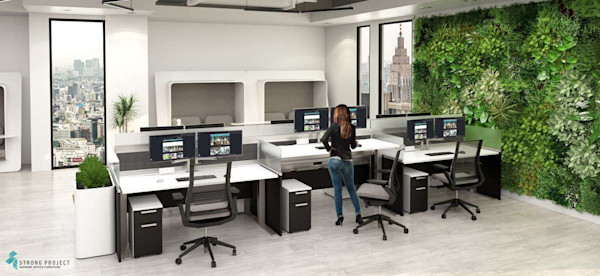
Find out how the modern cubicle can change the way employees work
Modern office cubicles with optional partitions or low walls offer employees a way to preserve a sense of privacy without the enclosed feeling of traditional cubicles. Explore a diverse range of options and personalize your modular office furniture. Include features such as removable partitions, low or high walls, and other intelligent design elements. Additionally, these desks are easily reconfigurable, allowing for flexible arrangements that suit your team's preferences.
Casual Lounge Areas for Hot Desking
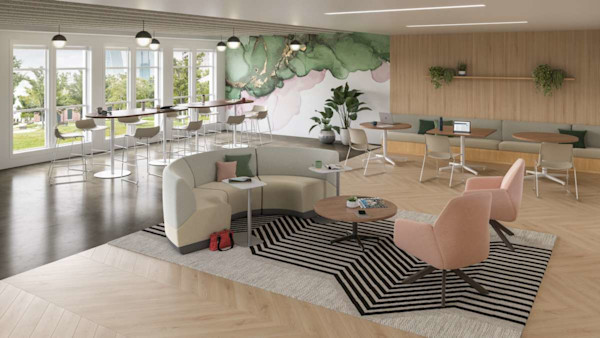
Build collaborative areas with comfortable lounge seating
Employees should have the flexibility to carry out their work throughout the entire office. A diverse range of workspaces facilitates a smoother transition as employees shift between home and the office. Recognizing that some individuals excel in brainstorming within a less formal environment, consider establishing zones with cozy couches and chairs to accommodate such preferences for your team. Embrace creativity and ensure that every corner of your office is designed to promote teamwork and productivity.
The Right Space
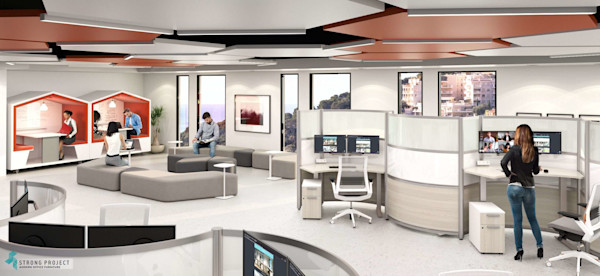
Contact us to learn more about designing the right space for your employees
A popular approach to hot desking involves replacing wall-to-wall cubicles with various zones catering to different needs. These may include focused workspaces, collaboration areas, training and planning spaces, as well as acoustic zones for private or small group work. With the flexibility of hot desking, employees can choose the zone that aligns with their specific work requirements. This approach not only encourages interaction but also sparks enthusiasm for the work at hand. This allows employees to sit near others who share a passion for the same projects.
Hot desking guarantees that every team member can actively participate in every stage of a project. Regardless of how you choose to implement modular office designs and hot desking strategies, one thing is certain – employees will experience increased productivity and find that the day passes more quickly. Being up, moving around, and collaborating with a team contrasts with the solitary clock-watching experience in a cubicle or a remote office.
Looking to create hot desking solutions for your hybrid office? Contact StrongProject.
Want to learn more about designing a flexible office? Check out these related posts:



